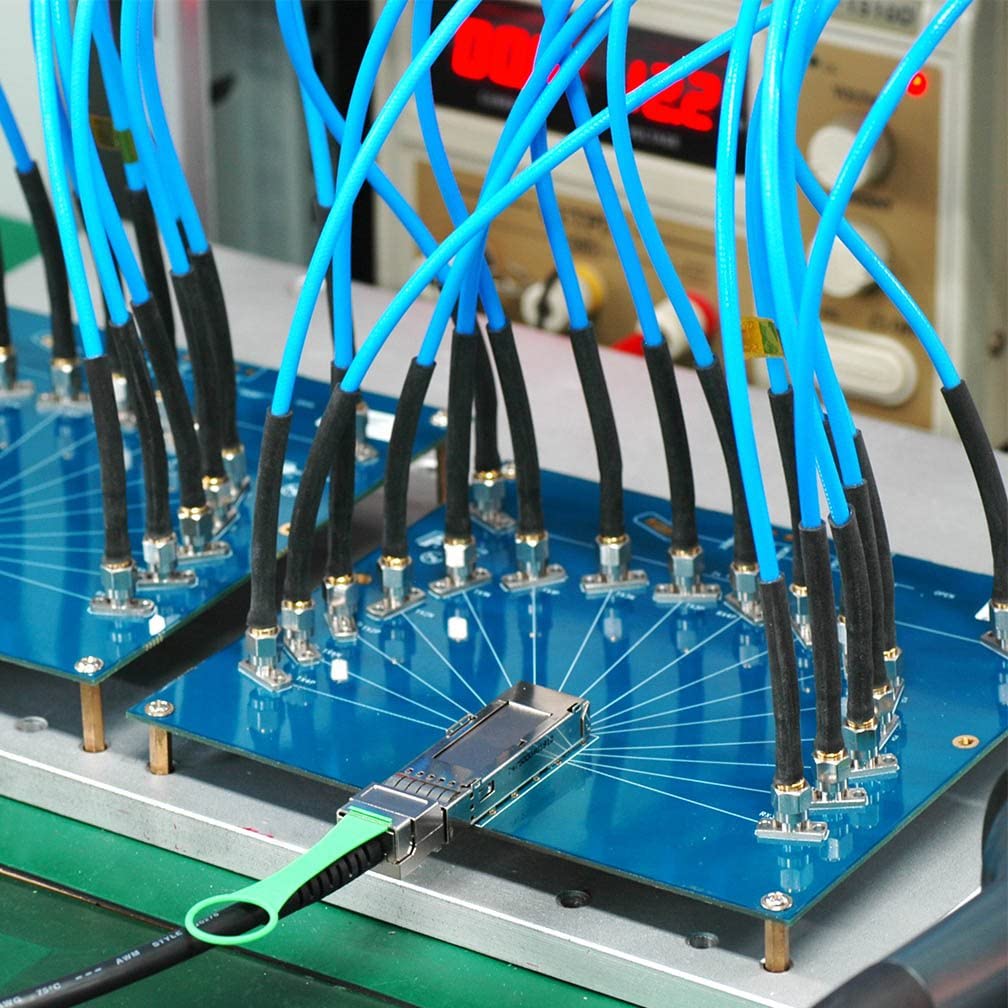DAC Cables vs AOC Cables
2021-08-11 11:57 admin
DAC Cables vs AOC Cables
DAC Cables and AOC Cables are widely employed in data center high-performance computing network cabling systems in everyday life due to their low latency, low power consumption, and low cost.Direct Attach Cable (DAC) consists of two-core copper cables. DAC cables are divided into two types: active DAC and passive DAC. Both active and passive DAC cables can transmit electrical signals directly through copper cables. The former can deliver without signal conditioning, while the latter has electric components inside the transceivers to spice up signals. Normally speaking, DAC cabless are wont to connect switches, servers, and storage inside racks.
Active Optical Cable (AOC) it's composed of multimode optical fibers with SFP form factor connectors at both ends. An external power supply is required to complete the mutual conversion of optical signals and electrical signals, from electrical signals to optical signals. So it's converted into an electrical signal, and at last, a symbol is distributed out. Generally speaking, the most purpose of AOC cables is to attach servers, switches, and storage information between different racks during a data center.
Comparison of DAC and AOC
Power Consumption: the operating expenses on power consumption will decrease when adopting the DAC options.What is the difference between the transmission distance of DAC and AOC?
Because of the DAC wiring scheme, it's more suitable for short-distance transmission. For AOC, it's suitable for long-distance networking.
Cost: When implemented during a large-scale data center nearby, the large-scale use of DAC cables consumes less money than AOC cables. Except for long-distance applications, AOC cables are cheaper. In summary, use DAC at short distances and consume lots of money; for long distances, choose AOC cables.
EMI Immunity: AOC cables are resistant to electromagnetic interference, which might be utilized in most situations
Application of AOC and DAC
DAC Cable Typical Application
The major utilization of 10G SFP+ DACs is connecting switches/servers to switches within or adjacent to the rack. All in all, these 10G direct-connect cables can even replace the ToR (top-of-rack) interconnection between 10G ToR switches and servers or alternative solutions for 10GbE switch stacking. Since 10G SFP+DAC typically supports a link length of seven m with low power consumption, low latency, and low cost, this selection is perfect for short-range server-to-switch connections.
10G SFP+ AOC Cable Typical Application
Without the strict link length limits, 10G SFP+ AOCs are commonly utilized in several locations within the data center like ToR, EoR (End of Row) and MoR (Middle of Row). First, connect from the server to the top-of-rack Ethernet switch; each server has one or two Ethernets, so connect with the switch. These are jumpered using AOC cables.More importantly, the utilization of 10G AOC within the data center can even be implemented in several major networking areas like Leaf, Core, or Spine switching areas. Like Spine, Leaf or Core switching areas. The interconnections are typically fulfilled by adopting these 10G SFP+ AOCs, with their theoretical maximum reach being 100 m.